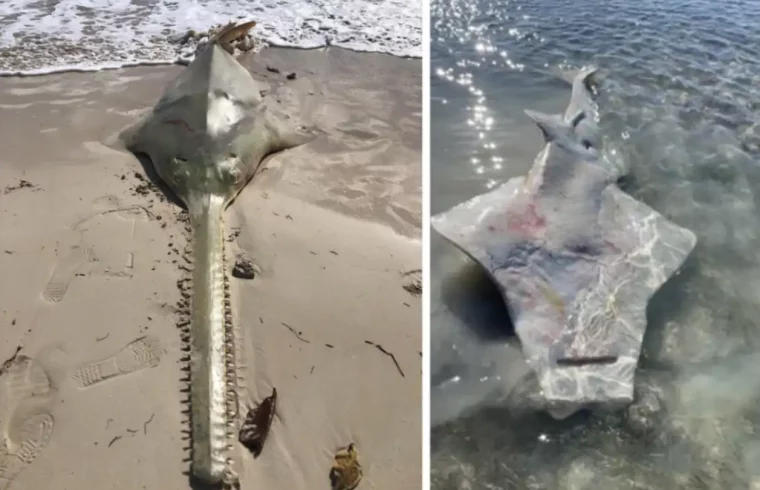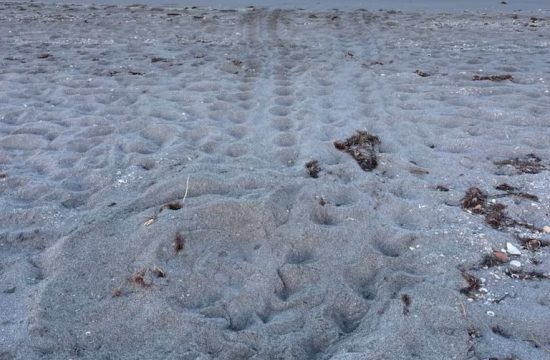Sarasota News Events:
A dead sawfish found on a beach in the Florida Keys; a dead sawfish that was found with its rostrum already cut off. Photographs by Andrew Heise / NOAA
“The Florida Fish and Wildlife Conservation Commission is documenting reports of abnormal fish behavior, including spinning and whirling, in the Lower Florida Keys. Along with this abnormal behavior, there have also been reports of fish deaths in these areas, including more than 28 small-tooth sawfish as of March 24. The Commission is leading an effort to investigate the abnormal behavior and cause of death. Efforts to collect and analyze samples are underway.
(About 100 reports of abnormal behavior in fish species, from sawfish to mutton snapper, have been logged, FWC Officer Liam Rodriguez told Keys Weekly on Feb. 27.
“All the marine institutes are working together to see if they can figure it out,” Rodriguez said. “Right now, there’s no cause of death.””)
An Attempt to Rescue Sick Sawfish
Next week, NOAA Fisheries will initiate an emergency response effort with partners to attempt to rescue and rehabilitate smalltooth sawfish affected by this mortality event. We hope to prevent additional losses of this endangered species.
An effort of this kind has never been made before in the United States. The logistics are complex.
“If the opportunity presents itself, this would be the first attempt ever to rescue and rehabilitate smalltooth sawfish from the wild,” said Adam Brame, NOAA Fisheries’ sawfish recovery coordinator. “We’re hopeful for positive outcomes from these rescue attempts, and grateful to our partners for their support as we work to protect this endangered species.”
“It’s important to note that active rescue and rehabilitation are not always effective in saving stranded animals. However, it can still give us critical information to learn about the nature of the distress,” he added.
Understanding the Response Effort
Why is rescue and rehabilitation necessary?
The smalltooth sawfish was the first marine fish to receive federal protection as an endangered species under the Endangered Species Act in 2003. They were historically found in coastal waters from Texas to North Carolina, but are now generally only found in Florida.
As of March 24, 109 sawfish had been affected by this event, with 28 documented deaths. Affected sawfish have been large juveniles and adults (7–14 feet in length).
“We suspect that total mortalities are greater since sawfish are negatively buoyant and thus unlikely to float after death,” said Brame. “Given the limited population size of smalltooth sawfish, the mortality of at least two dozen sawfish could have an impact on the recovery of this species.””













